Hui Chen
Alibaba Group
PruneHal: Reducing Hallucinations in Multi-modal Large Language Models through Adaptive KV Cache Pruning
Oct 22, 2025Abstract:While multi-modal large language models (MLLMs) have made significant progress in recent years, the issue of hallucinations remains a major challenge. To mitigate this phenomenon, existing solutions either introduce additional data for further training or incorporate external or internal information during inference. However, these approaches inevitably introduce extra computational costs. In this paper, we observe that hallucinations in MLLMs are strongly associated with insufficient attention allocated to visual tokens. In particular, the presence of redundant visual tokens disperses the model's attention, preventing it from focusing on the most informative ones. As a result, critical visual cues are often under-attended, which in turn exacerbates the occurrence of hallucinations. Building on this observation, we propose \textbf{PruneHal}, a training-free, simple yet effective method that leverages adaptive KV cache pruning to enhance the model's focus on critical visual information, thereby mitigating hallucinations. To the best of our knowledge, we are the first to apply token pruning for hallucination mitigation in MLLMs. Notably, our method don't require additional training and incurs nearly no extra inference cost. Moreover, PruneHal is model-agnostic and can be seamlessly integrated with different decoding strategies, including those specifically designed for hallucination mitigation. We evaluate PruneHal on several widely used hallucination evaluation benchmarks using four mainstream MLLMs, achieving robust and outstanding results that highlight the effectiveness and superiority of our method. Our code will be publicly available.
StaMo: Unsupervised Learning of Generalizable Robot Motion from Compact State Representation
Oct 06, 2025Abstract:A fundamental challenge in embodied intelligence is developing expressive and compact state representations for efficient world modeling and decision making. However, existing methods often fail to achieve this balance, yielding representations that are either overly redundant or lacking in task-critical information. We propose an unsupervised approach that learns a highly compressed two-token state representation using a lightweight encoder and a pre-trained Diffusion Transformer (DiT) decoder, capitalizing on its strong generative prior. Our representation is efficient, interpretable, and integrates seamlessly into existing VLA-based models, improving performance by 14.3% on LIBERO and 30% in real-world task success with minimal inference overhead. More importantly, we find that the difference between these tokens, obtained via latent interpolation, naturally serves as a highly effective latent action, which can be further decoded into executable robot actions. This emergent capability reveals that our representation captures structured dynamics without explicit supervision. We name our method StaMo for its ability to learn generalizable robotic Motion from compact State representation, which is encoded from static images, challenging the prevalent dependence to learning latent action on complex architectures and video data. The resulting latent actions also enhance policy co-training, outperforming prior methods by 10.4% with improved interpretability. Moreover, our approach scales effectively across diverse data sources, including real-world robot data, simulation, and human egocentric video.
Active Inference Framework for Closed-Loop Sensing, Communication, and Control in UAV Systems
Sep 17, 2025Abstract:Integrated sensing and communication (ISAC) is a core technology for 6G, and its application to closed-loop sensing, communication, and control (SCC) enables various services. Existing SCC solutions often treat sensing and control separately, leading to suboptimal performance and resource usage. In this work, we introduce the active inference framework (AIF) into SCC-enabled unmanned aerial vehicle (UAV) systems for joint state estimation, control, and sensing resource allocation. By formulating a unified generative model, the problem reduces to minimizing variational free energy for inference and expected free energy for action planning. Simulation results show that both control cost and sensing cost are reduced relative to baselines.
Sensing with Mobile Devices through Radio SLAM: Models, Methods, Opportunities, and Challenges
Sep 09, 2025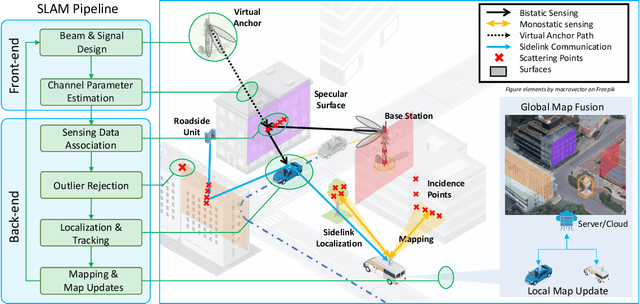

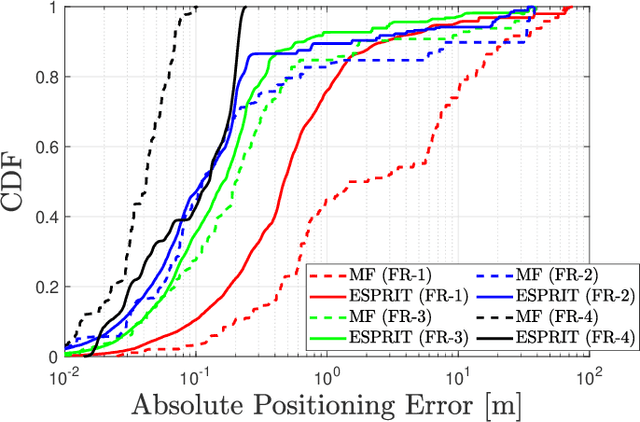
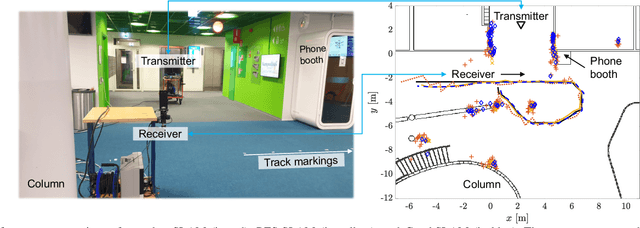
Abstract:The integration of sensing and communication (ISAC) is a cornerstone of 6G, enabling simultaneous environmental awareness and communication. This paper explores radio SLAM (simultaneous localization and mapping) as a key ISAC approach, using radio signals for mapping and localization. We analyze radio SLAM across different frequency bands, discussing trade-offs in coverage, resolution, and hardware requirements. We also highlight opportunities for integration with sensing, positioning, and cooperative networks. The findings pave the way for standardized solutions in 6G applications such as autonomous systems and industrial robotics.
Transformer-Guided Content-Adaptive Graph Learning for Hyperspectral Unmixing
Sep 03, 2025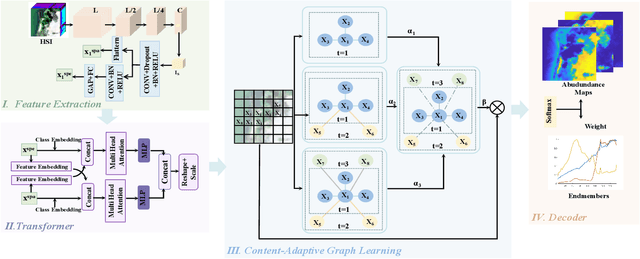
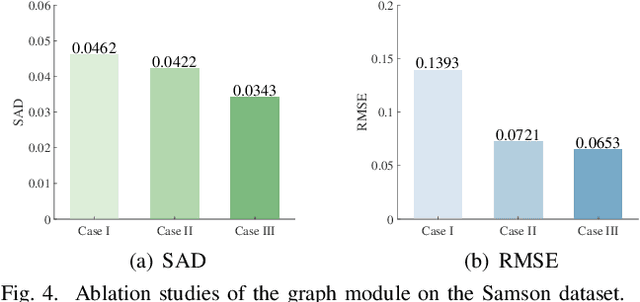
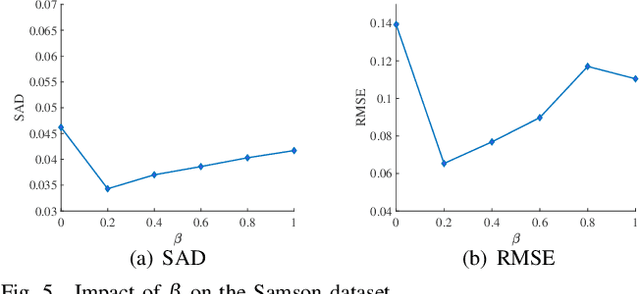
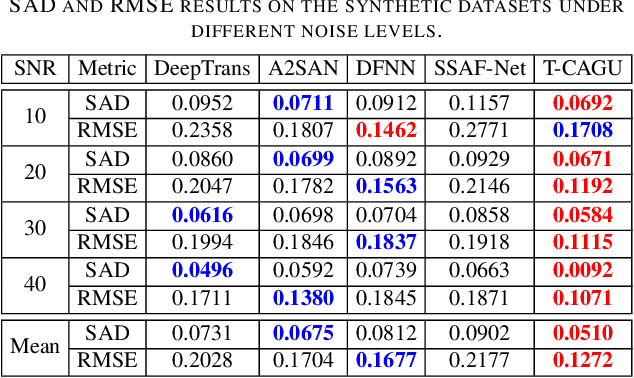
Abstract:Hyperspectral unmixing (HU) targets to decompose each mixed pixel in remote sensing images into a set of endmembers and their corresponding abundances. Despite significant progress in this field using deep learning, most methods fail to simultaneously characterize global dependencies and local consistency, making it difficult to preserve both long-range interactions and boundary details. This letter proposes a novel transformer-guided content-adaptive graph unmixing framework (T-CAGU), which overcomes these challenges by employing a transformer to capture global dependencies and introducing a content-adaptive graph neural network to enhance local relationships. Unlike previous work, T-CAGU integrates multiple propagation orders to dynamically learn the graph structure, ensuring robustness against noise. Furthermore, T-CAGU leverages a graph residual mechanism to preserve global information and stabilize training. Experimental results demonstrate its superiority over the state-of-the-art methods. Our code is available at https://github.com/xianchaoxiu/T-CAGU.
ClaimGen-CN: A Large-scale Chinese Dataset for Legal Claim Generation
Aug 24, 2025Abstract:Legal claims refer to the plaintiff's demands in a case and are essential to guiding judicial reasoning and case resolution. While many works have focused on improving the efficiency of legal professionals, the research on helping non-professionals (e.g., plaintiffs) remains unexplored. This paper explores the problem of legal claim generation based on the given case's facts. First, we construct ClaimGen-CN, the first dataset for Chinese legal claim generation task, from various real-world legal disputes. Additionally, we design an evaluation metric tailored for assessing the generated claims, which encompasses two essential dimensions: factuality and clarity. Building on this, we conduct a comprehensive zero-shot evaluation of state-of-the-art general and legal-domain large language models. Our findings highlight the limitations of the current models in factual precision and expressive clarity, pointing to the need for more targeted development in this domain. To encourage further exploration of this important task, we will make the dataset publicly available.
Automated Heuristic Design for Unit Commitment Using Large Language Models
Jun 14, 2025Abstract:The Unit Commitment (UC) problem is a classic challenge in the optimal scheduling of power systems. Years of research and practice have shown that formulating reasonable unit commitment plans can significantly improve the economic efficiency of power systems' operations. In recent years, with the introduction of technologies such as machine learning and the Lagrangian relaxation method, the solution methods for the UC problem have become increasingly diversified, but still face challenges in terms of accuracy and robustness. This paper proposes a Function Space Search (FunSearch) method based on large language models. This method combines pre-trained large language models and evaluators to creatively generate solutions through the program search and evolution process while ensuring their rationality. In simulation experiments, a case of unit commitment with \(10\) units is used mainly. Compared to the genetic algorithm, the results show that FunSearch performs better in terms of sampling time, evaluation time, and total operating cost of the system, demonstrating its great potential as an effective tool for solving the UC problem.
MLR-Bench: Evaluating AI Agents on Open-Ended Machine Learning Research
May 26, 2025Abstract:Recent advancements in AI agents have demonstrated their growing potential to drive and support scientific discovery. In this work, we introduce MLR-Bench, a comprehensive benchmark for evaluating AI agents on open-ended machine learning research. MLR-Bench includes three key components: (1) 201 research tasks sourced from NeurIPS, ICLR, and ICML workshops covering diverse ML topics; (2) MLR-Judge, an automated evaluation framework combining LLM-based reviewers with carefully designed review rubrics to assess research quality; and (3) MLR-Agent, a modular agent scaffold capable of completing research tasks through four stages: idea generation, proposal formulation, experimentation, and paper writing. Our framework supports both stepwise assessment across these distinct research stages, and end-to-end evaluation of the final research paper. We then use MLR-Bench to evaluate six frontier LLMs and an advanced coding agent, finding that while LLMs are effective at generating coherent ideas and well-structured papers, current coding agents frequently (e.g., in 80% of the cases) produce fabricated or invalidated experimental results--posing a major barrier to scientific reliability. We validate MLR-Judge through human evaluation, showing high agreement with expert reviewers, supporting its potential as a scalable tool for research evaluation. We open-source MLR-Bench to help the community benchmark, diagnose, and improve AI research agents toward trustworthy and transparent scientific discovery.
AdaTP: Attention-Debiased Token Pruning for Video Large Language Models
May 26, 2025Abstract:Video Large Language Models (Video LLMs) have achieved remarkable results in video understanding tasks. However, they often suffer from heavy computational overhead due to the large number of visual tokens generated from multiple video frames. Existing visual token compression methods often rely on attention scores from language models as guidance. However, these scores exhibit inherent biases: global bias reflects a tendency to focus on the two ends of the visual token sequence, while local bias leads to an over-concentration on the same spatial positions across different frames. To address the issue of attention bias, we propose $\textbf{A}$ttention-$\textbf{D}$ebi$\textbf{a}$sed $\textbf{T}$oken $\textbf{P}$runing for Video Large Language Models ($\textbf{AdaTP}$), a novel token pruning pipeline for Video LLMs. AdaTP integrates two dedicated debiasing modules into the pipeline, targeting global attention bias and local attention bias, respectively. Without the need for additional training, our method significantly reduces the computational overhead of Video LLMs while retaining the performance of vanilla models. Extensive evaluation shows that AdaTP achieves state-of-the-art performance in various commonly used video understanding benchmarks. In particular, on LLaVA-OneVision-7B, AdaTP maintains performance without degradation while using only up to $27.3\%$ FLOPs compared to the vanilla model. Our code will be released soon.
Fast Quiet-STaR: Thinking Without Thought Tokens
May 23, 2025Abstract:Large Language Models (LLMs) have achieved impressive performance across a range of natural language processing tasks. However, recent advances demonstrate that further gains particularly in complex reasoning tasks require more than merely scaling up model sizes or training data. One promising direction is to enable models to think during the reasoning process. Recently, Quiet STaR significantly improves reasoning by generating token-level thought traces, but incurs substantial inference overhead. In this work, we propose Fast Quiet STaR, a more efficient reasoning framework that preserves the benefits of token-level reasoning while reducing computational cost. Our method introduces a curriculum learning based training strategy that gradually reduces the number of thought tokens, enabling the model to internalize more abstract and concise reasoning processes. We further extend this approach to the standard Next Token Prediction (NTP) setting through reinforcement learning-based fine-tuning, resulting in Fast Quiet-STaR NTP, which eliminates the need for explicit thought token generation during inference. Experiments on four benchmark datasets with Mistral 7B and Qwen2.5 7B demonstrate that Fast Quiet-STaR consistently outperforms Quiet-STaR in terms of average accuracy under the same inference time budget. Notably, Fast Quiet-STaR NTP achieves an average accuracy improvement of 9\% on Mistral 7B and 5.7\% on Qwen2.5 7B, while maintaining the same inference latency. Our code will be available at https://github.com/huangwei200012/Fast-Quiet-STaR.
 Add to Chrome
Add to Chrome Add to Firefox
Add to Firefox Add to Edge
Add to Edge